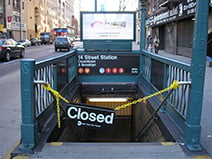Transit Mobile Payment Is A PF Dream Come True

On Monday (Nov. 16), San Francisco Mayor Ed Lee officially brought his city’s public transit system into the mobile payment era, following similar moves by cities across the globe. Just last month, the totality of London’s black cabs said that they will accept mobile payment.
These efforts are crucial for the payment facilitator community as nowhere is the need for the speed and convenience of mobile payments more needed than in urban public transit. Of potentially greater significance are the huge volumes of consumers that are using such systems—and the extreme tendency of such communities to get comfort from what other travelers are doing. In short, successful transportation trials have a far greater chance of meaningfully moving the acceptance needle than almost any other vertical.
As much as coffee shops may gravitate to every kind of mobile payment imaginable, they simply don’t have the volume—nor the copycat psychology—that comes with the transportation territory.
The London Black Cab effort is being championed by HailoPay, which foregoes the need for consumers to even download a mobile app. “To use the service, drivers are given a unique badge number that users enter into the site. Drivers and users then confirm the payment amount, and receipts are sent to both parties,” a Wired story noted. “It also allows customers to split fares, as well as pay partly with cash and partly with mobile.”
The San Francisco mobile rollout also features some non-traditional security mechanisms. “The MuniMobile app design offers a dynamic animated ticket for visual authentication. The animated ticket includes a moving customized San Francisco cityscape that changes color while activated to avoid unauthorized duplications,” said a statement from the city. “Riders simply tap the screen to show the operator the authentic ticket. The dynamic animated ticket also supports quick response codes offering greater fare detail to transit fare inspectors.”